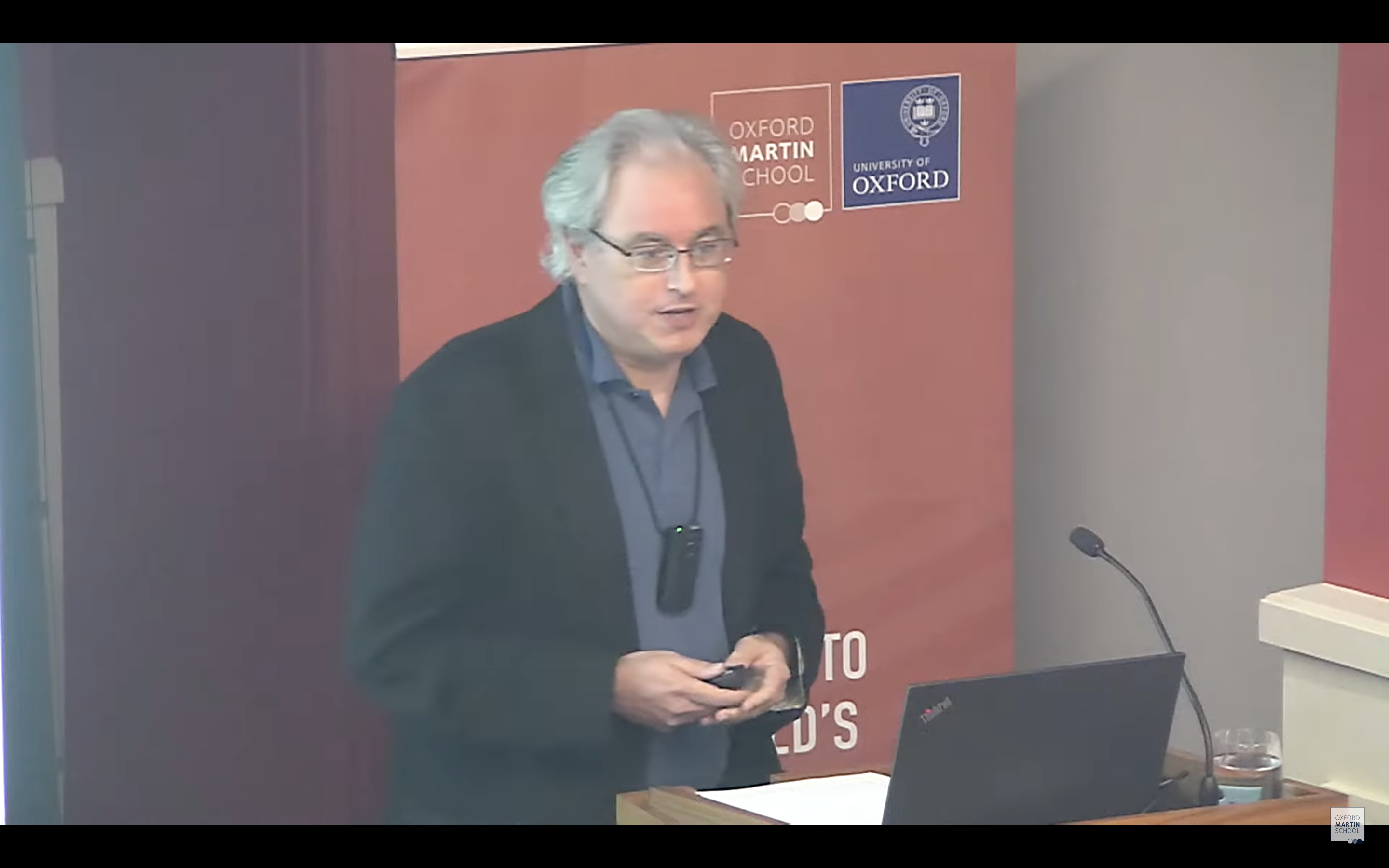By
March 02, 2009
This is a joint posting with Cindy PrietoOn February 13, 2009, the UN's World Food Programme (WFP) began distributing food vouchers to 120,000 "cash-strapped residents" in Ouagadougou, Burkina Faso -- representing almost 10 percent of the capital city's population. The distribution program is part of WFP's efforts to mitigate the impact of high food prices in the country, which have persisted after an abundant harvest. As the Country Director for WFP in Burkina Faso explained, "Sometimes it makes more sense to give people vouchers than bags of food."The debate on "cash versus food" is not a new one. I remember discussing this issue with colleagues in Liberia in 1999, when the organization that I was working for was trying to weigh the merits of cash-for-work versus food-for-work in the post-conflict environment. The debate then -- and now -- revolved around a simple question: How can we identify which instrument (cash or food) is the most suitable to support vulnerable households in times of need? (The issue of project recipients' involvement in this process is also an important concern -- but I won't get into here).Nevertheless, the idea that "it makes more sense to give people vouchers" seems to be an increasingly common one among donors, international and non-governmental organizations and development experts. In September 2008, IRIN reported the use of cash-based interventions in West Africa in response to the global food price crisis. And late last year, Eric Werker called on donors to provide relief vouchers to "needy recipients in response to the food crisis" (although admittedly with a new twist). There are many reasons for this increased interest in cash-based interventions, including shifting donor priorities, logistical ease, freedom of product choice and concerns over market disruptions associated with food distributions.Let's be clear: Cash-based interventions (including vouchers) can certainly be an effective and efficient intervention in some contexts and under some conditions. But this doesn't mean that cash is the "cure-all" for food aid's (perceived) ills. If donors and international organizations want to continue down the cash road, they should proceed with caution (I made a similar plea when considering the merits of imported food aid versus local purchases). This means two things. First, the appropriateness of cash (versus food) needs to be carefully considered during the project design phase of any program. And second, once the program is implemented, such interventions need to be carefully evaluated -- ideally by comparing food and cash in the same context.Figure 1. Deflated Monthly Food Prices in Ouagadougou, Burkina Faso, 2005-2008 Source: Author's calculations using data from the Systeme d’Informations sur les Cereales (SIM-C) in Burkina FasoIs food or cash appropriate? Let's consider the case of Burkina Faso, where the cash voucher program is now under way. One of the world's poorest countries, Burkina Faso is a landlocked country located in the Sahelian region of West Africa. Like several of its Sahelian neighbors, the country has experienced significant food price inflation since July 2007 (see Figure 1), especially for imported commodities (maize and rice). Between July 2007 and late 2008, for example, prices increased by 79 percent for maize and 42 percent for rice, which are particularly important food items for urban populations. The WFP voucher program -- which will provide $3 USD to each household, with a maximum of $108 over six months -- can be spent on a limited number of food (maize, sugar, cooking oil) and non-food items This will effectively increase recipient households' incomes, and (probably) increase demand for maize. If total maize supply in Burkina Faso stays the same (i.e., Burkina cannot or does not import more maize from its neighbors), then this will increase maize prices. This will not only lower the purchasing power of those who received the voucher, but (and perhaps more importantly), will make poor urban consumers who didn't get the voucher worse-off -- as they will face higher prices and no additional income. While this scenario might be unlikely with many cash-based programs, it is more than a hypothetical concern in Burkina Faso - since the voucher program covers 10% of the city's population and provides 10% of per capita income.In this case, cash vouchers alone might not solve the food price crisis for vulnerable urban populations in Burkina Faso, and could actually exacerbate the situation. A better course may be a combination of food aid (maize and rice) with cash vouchers, which would increase the purchasing power of the poor while reducing inflationary pressure.How do we know whether food or cash is appropriate? Although the food versus cash debate has been going on for some time, there are relatively few empirical studies assessing whether cash or food is more suitable in a given context. Yes, there are studies of the impact of food distribution programs, as well as the impact of conditional cash transfer programs (think of Progresa in Mexico). But there aren’t that many studies comparing the two. And this is what we need to determine whether food or cash is more effective, efficient and culturally appropriate in meeting the needs of vulnerable populations in a given context.How should we go about evaluating such programs? At a minimum, it would require having a program that provides food and cash to two different groups and comparing their well-being before and after the program. But if these groups are different in some fundamental way, then we don’t know whether the difference in outcomes is due to the type of intervention (food or cash) or differences between the two groups.An even better solution, then, would be to ensure more rigorous impact evaluations of such interventions. This would require randomly assigning vulnerable participants to either food or cash and conducting pre- and post-evaluations. While random assignment needs to be done carefully, this approach could provide some important insights into determining whether food or cash is more appropriate for future food price crises. WFP used such an evaluation approach in Sri Lanka in 2005-2006. More studies like this one are needed, with the results widely shared among all actors -- donors, interventional organizations, host country governments, and, most importantly, the recipient communities themselves.According to IRIN, WFP is planning on rolling out a similar food voucher program for 60,000 people in Bobo-Dioulasso, the second largest-city in Burkina Faso. If WFP hasn't already planned to do so, I hope that they will consider an evaluation framework similar to the one outlined above. With increased interest among donors in cash-based approaches, this might be a unique opportunity for international and non-governmental organizations to do these types of evaluations.
Source: Author's calculations using data from the Systeme d’Informations sur les Cereales (SIM-C) in Burkina FasoIs food or cash appropriate? Let's consider the case of Burkina Faso, where the cash voucher program is now under way. One of the world's poorest countries, Burkina Faso is a landlocked country located in the Sahelian region of West Africa. Like several of its Sahelian neighbors, the country has experienced significant food price inflation since July 2007 (see Figure 1), especially for imported commodities (maize and rice). Between July 2007 and late 2008, for example, prices increased by 79 percent for maize and 42 percent for rice, which are particularly important food items for urban populations. The WFP voucher program -- which will provide $3 USD to each household, with a maximum of $108 over six months -- can be spent on a limited number of food (maize, sugar, cooking oil) and non-food items This will effectively increase recipient households' incomes, and (probably) increase demand for maize. If total maize supply in Burkina Faso stays the same (i.e., Burkina cannot or does not import more maize from its neighbors), then this will increase maize prices. This will not only lower the purchasing power of those who received the voucher, but (and perhaps more importantly), will make poor urban consumers who didn't get the voucher worse-off -- as they will face higher prices and no additional income. While this scenario might be unlikely with many cash-based programs, it is more than a hypothetical concern in Burkina Faso - since the voucher program covers 10% of the city's population and provides 10% of per capita income.In this case, cash vouchers alone might not solve the food price crisis for vulnerable urban populations in Burkina Faso, and could actually exacerbate the situation. A better course may be a combination of food aid (maize and rice) with cash vouchers, which would increase the purchasing power of the poor while reducing inflationary pressure.How do we know whether food or cash is appropriate? Although the food versus cash debate has been going on for some time, there are relatively few empirical studies assessing whether cash or food is more suitable in a given context. Yes, there are studies of the impact of food distribution programs, as well as the impact of conditional cash transfer programs (think of Progresa in Mexico). But there aren’t that many studies comparing the two. And this is what we need to determine whether food or cash is more effective, efficient and culturally appropriate in meeting the needs of vulnerable populations in a given context.How should we go about evaluating such programs? At a minimum, it would require having a program that provides food and cash to two different groups and comparing their well-being before and after the program. But if these groups are different in some fundamental way, then we don’t know whether the difference in outcomes is due to the type of intervention (food or cash) or differences between the two groups.An even better solution, then, would be to ensure more rigorous impact evaluations of such interventions. This would require randomly assigning vulnerable participants to either food or cash and conducting pre- and post-evaluations. While random assignment needs to be done carefully, this approach could provide some important insights into determining whether food or cash is more appropriate for future food price crises. WFP used such an evaluation approach in Sri Lanka in 2005-2006. More studies like this one are needed, with the results widely shared among all actors -- donors, interventional organizations, host country governments, and, most importantly, the recipient communities themselves.According to IRIN, WFP is planning on rolling out a similar food voucher program for 60,000 people in Bobo-Dioulasso, the second largest-city in Burkina Faso. If WFP hasn't already planned to do so, I hope that they will consider an evaluation framework similar to the one outlined above. With increased interest among donors in cash-based approaches, this might be a unique opportunity for international and non-governmental organizations to do these types of evaluations.
 Source: Author's calculations using data from the Systeme d’Informations sur les Cereales (SIM-C) in Burkina FasoIs food or cash appropriate? Let's consider the case of Burkina Faso, where the cash voucher program is now under way. One of the world's poorest countries, Burkina Faso is a landlocked country located in the Sahelian region of West Africa. Like several of its Sahelian neighbors, the country has experienced significant food price inflation since July 2007 (see Figure 1), especially for imported commodities (maize and rice). Between July 2007 and late 2008, for example, prices increased by 79 percent for maize and 42 percent for rice, which are particularly important food items for urban populations. The WFP voucher program -- which will provide $3 USD to each household, with a maximum of $108 over six months -- can be spent on a limited number of food (maize, sugar, cooking oil) and non-food items This will effectively increase recipient households' incomes, and (probably) increase demand for maize. If total maize supply in Burkina Faso stays the same (i.e., Burkina cannot or does not import more maize from its neighbors), then this will increase maize prices. This will not only lower the purchasing power of those who received the voucher, but (and perhaps more importantly), will make poor urban consumers who didn't get the voucher worse-off -- as they will face higher prices and no additional income. While this scenario might be unlikely with many cash-based programs, it is more than a hypothetical concern in Burkina Faso - since the voucher program covers 10% of the city's population and provides 10% of per capita income.In this case, cash vouchers alone might not solve the food price crisis for vulnerable urban populations in Burkina Faso, and could actually exacerbate the situation. A better course may be a combination of food aid (maize and rice) with cash vouchers, which would increase the purchasing power of the poor while reducing inflationary pressure.How do we know whether food or cash is appropriate? Although the food versus cash debate has been going on for some time, there are relatively few empirical studies assessing whether cash or food is more suitable in a given context. Yes, there are studies of the impact of food distribution programs, as well as the impact of conditional cash transfer programs (think of Progresa in Mexico). But there aren’t that many studies comparing the two. And this is what we need to determine whether food or cash is more effective, efficient and culturally appropriate in meeting the needs of vulnerable populations in a given context.How should we go about evaluating such programs? At a minimum, it would require having a program that provides food and cash to two different groups and comparing their well-being before and after the program. But if these groups are different in some fundamental way, then we don’t know whether the difference in outcomes is due to the type of intervention (food or cash) or differences between the two groups.An even better solution, then, would be to ensure more rigorous impact evaluations of such interventions. This would require randomly assigning vulnerable participants to either food or cash and conducting pre- and post-evaluations. While random assignment needs to be done carefully, this approach could provide some important insights into determining whether food or cash is more appropriate for future food price crises. WFP used such an evaluation approach in Sri Lanka in 2005-2006. More studies like this one are needed, with the results widely shared among all actors -- donors, interventional organizations, host country governments, and, most importantly, the recipient communities themselves.According to IRIN, WFP is planning on rolling out a similar food voucher program for 60,000 people in Bobo-Dioulasso, the second largest-city in Burkina Faso. If WFP hasn't already planned to do so, I hope that they will consider an evaluation framework similar to the one outlined above. With increased interest among donors in cash-based approaches, this might be a unique opportunity for international and non-governmental organizations to do these types of evaluations.
Source: Author's calculations using data from the Systeme d’Informations sur les Cereales (SIM-C) in Burkina FasoIs food or cash appropriate? Let's consider the case of Burkina Faso, where the cash voucher program is now under way. One of the world's poorest countries, Burkina Faso is a landlocked country located in the Sahelian region of West Africa. Like several of its Sahelian neighbors, the country has experienced significant food price inflation since July 2007 (see Figure 1), especially for imported commodities (maize and rice). Between July 2007 and late 2008, for example, prices increased by 79 percent for maize and 42 percent for rice, which are particularly important food items for urban populations. The WFP voucher program -- which will provide $3 USD to each household, with a maximum of $108 over six months -- can be spent on a limited number of food (maize, sugar, cooking oil) and non-food items This will effectively increase recipient households' incomes, and (probably) increase demand for maize. If total maize supply in Burkina Faso stays the same (i.e., Burkina cannot or does not import more maize from its neighbors), then this will increase maize prices. This will not only lower the purchasing power of those who received the voucher, but (and perhaps more importantly), will make poor urban consumers who didn't get the voucher worse-off -- as they will face higher prices and no additional income. While this scenario might be unlikely with many cash-based programs, it is more than a hypothetical concern in Burkina Faso - since the voucher program covers 10% of the city's population and provides 10% of per capita income.In this case, cash vouchers alone might not solve the food price crisis for vulnerable urban populations in Burkina Faso, and could actually exacerbate the situation. A better course may be a combination of food aid (maize and rice) with cash vouchers, which would increase the purchasing power of the poor while reducing inflationary pressure.How do we know whether food or cash is appropriate? Although the food versus cash debate has been going on for some time, there are relatively few empirical studies assessing whether cash or food is more suitable in a given context. Yes, there are studies of the impact of food distribution programs, as well as the impact of conditional cash transfer programs (think of Progresa in Mexico). But there aren’t that many studies comparing the two. And this is what we need to determine whether food or cash is more effective, efficient and culturally appropriate in meeting the needs of vulnerable populations in a given context.How should we go about evaluating such programs? At a minimum, it would require having a program that provides food and cash to two different groups and comparing their well-being before and after the program. But if these groups are different in some fundamental way, then we don’t know whether the difference in outcomes is due to the type of intervention (food or cash) or differences between the two groups.An even better solution, then, would be to ensure more rigorous impact evaluations of such interventions. This would require randomly assigning vulnerable participants to either food or cash and conducting pre- and post-evaluations. While random assignment needs to be done carefully, this approach could provide some important insights into determining whether food or cash is more appropriate for future food price crises. WFP used such an evaluation approach in Sri Lanka in 2005-2006. More studies like this one are needed, with the results widely shared among all actors -- donors, interventional organizations, host country governments, and, most importantly, the recipient communities themselves.According to IRIN, WFP is planning on rolling out a similar food voucher program for 60,000 people in Bobo-Dioulasso, the second largest-city in Burkina Faso. If WFP hasn't already planned to do so, I hope that they will consider an evaluation framework similar to the one outlined above. With increased interest among donors in cash-based approaches, this might be a unique opportunity for international and non-governmental organizations to do these types of evaluations.Disclaimer
CGD blog posts reflect the views of the authors, drawing on prior research and experience in their areas of expertise. CGD is a nonpartisan, independent organization and does not take institutional positions.





